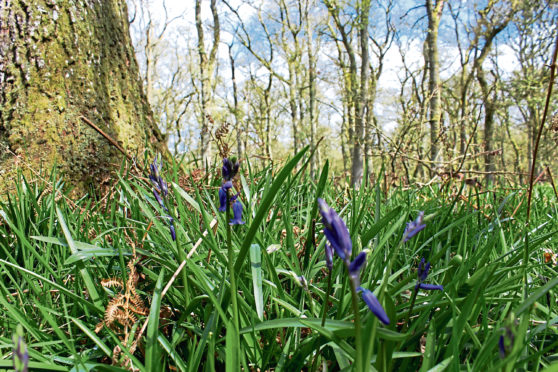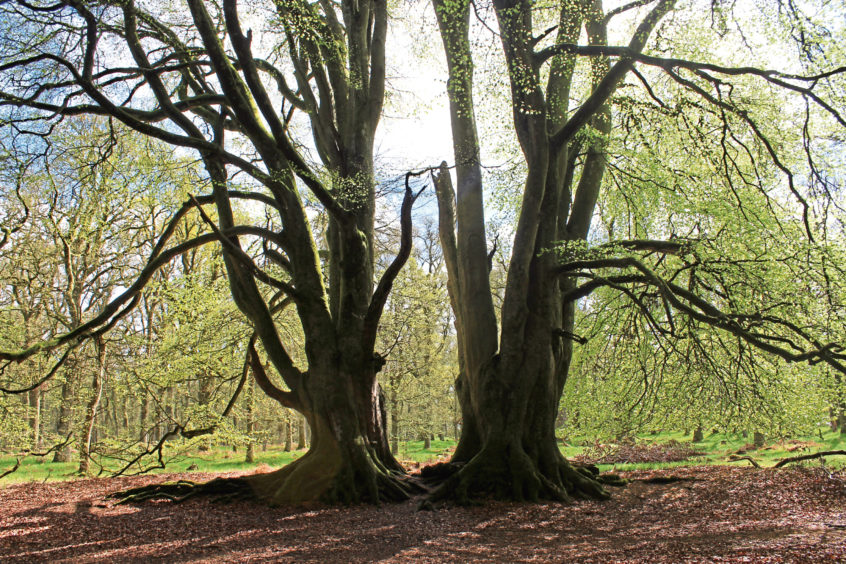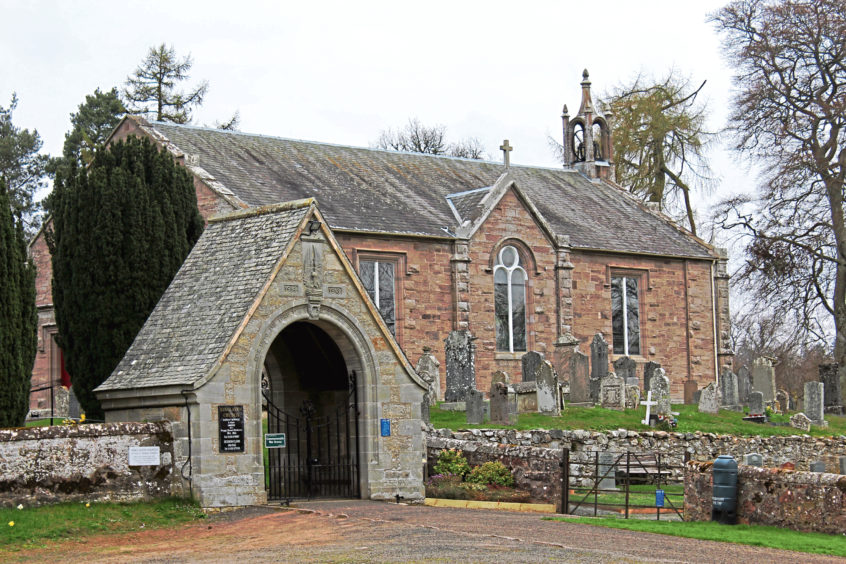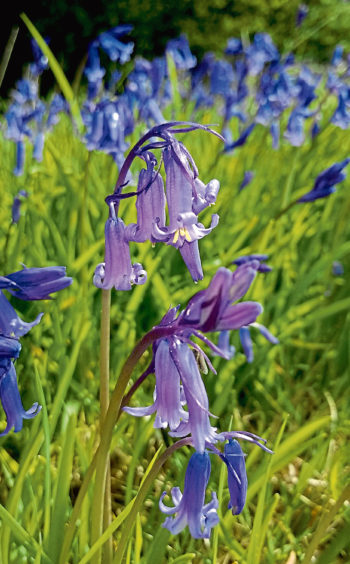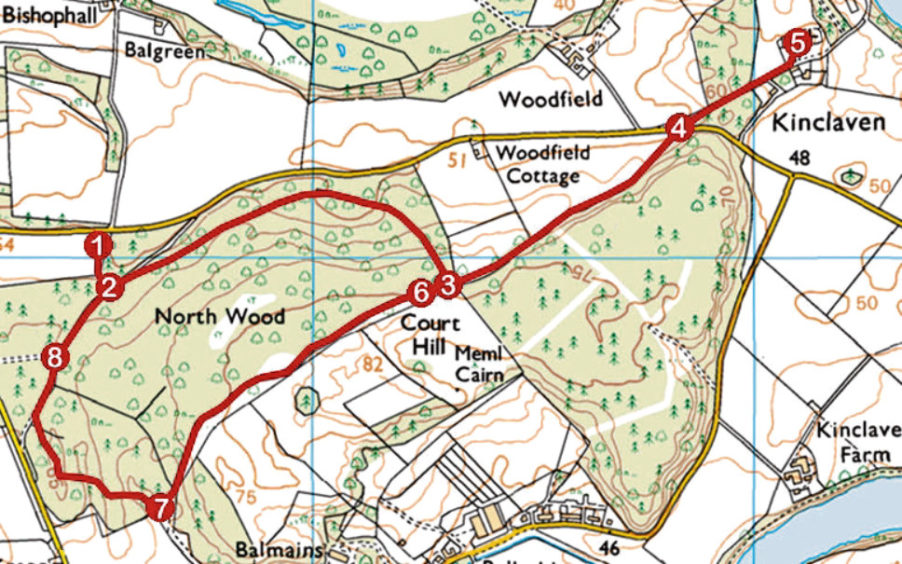May is the month when bluebells bloom in Scotland and one of the best places to see these delicate little plants blossoming is the appropriately named Kinclaven Bluebell Wood, in Perthshire.
Below ancient oaks and veteran beeches, carpets of flowers briefly transform the forest floor into a seemingly endless haze of blue and it is rightly regarded as one of the country’s finest bluebells woods.
Steeped in history, full of wildlife and originally named simply North Wood, it became known as Ballathie Bluebell Wood due to the profusion of these plants before being renamed Kinclaven Bluebell Wood when the land was bought by the Woodland Trust a couple of years ago.
With the trust busy planting new trees in fields around the oaks to both protect and enhance them, a short loop through the heart of the old wood, cloaking the northern slope of Court Hill, showcases the flowers in all their glory.
A relatively new car park on the minor road just west of the hamlet of Kinclaven offers easy access and, from an information board, a gravel path rises gently into the trees where bluebells are soon spotted.
Traditionally woodland plants which, over time form vast colonies, bluebells usually flower from mid-April to late May depending on the Spring weather, adding some much-needed colour to the countryside following the departure of the daffodils and, before them, the snowdrops.
Negotiating fallen oaks, the trail weaves east through the trees and the bluebells, dipping to cross a strip of old concrete – the base of an abandoned cattle feeding area – before climbing to the top corner of the plantation.
The way meets up with the line of the Old Kirk Road – an ancient right of way and possibly a route historically used by cattle drovers – that crosses Court Hill before descending to Kinclaven Parish Church.
While younger walkers may be tempted by the rope swing hanging from a bough here, I opted to forego its dangling delights and followed a field-edge path then track down to the secluded rural kirk.
Built in 1848 to replace an earlier place of worship, entry to the church and graveyard is via a charming lychgate and, in keeping with the general theme of the walk, it is worth noting the rooftop belfry which contains a bell half a metre in diameter, cast in Holland and operated by an external chain.
Returning to the wood, I followed the course of the old road along the top edge of the plantation, the way passing gnarly old beech trees, the odd, often rather grotesque, fusion of snaking stems the result of bundle planting, when many saplings are planted together as a bunch. The oldest are thought to date from the mid-18th century.
Along with the oaks and bands of more recent conifers, these trees not only shelter bluebells and other wildflowers but also provide a home for mammals like red squirrel, roe deer, pine marten, brown hare, hedgehogs and bats and an array of birdlife, including the song thrush, cuckoo and woodcock.
And, sitting just off the trail as the walk loops round back towards the car park, Outlander fans will recognise two of these characterful beeches as the Witness Trees from season four of the popular TV series, ensuring that Kinclaven’s fame now extends beyond its beautiful bluebells.
ROUTE
1. By information board, pass through gateway in wooden fence and ascend gravel path south into woodland to reach T-junction.
2. Turn left and follow path east through woodland, ascending in due course to signed junction.
3. Turn left (signed Kinclaven) and follow field edge path down to road.
4. Cross road and continue ahead on track to Kinclaven Parish Church.
5. Retrace steps to point 3.
6. Continue ahead (signed North Wood Circular Path) following track west along southern edge of woodland, dipping in due course to junction.
7. Turn right (signed North Wood Circular Path) and then, at arrow post, go left, ascending steeply at first before following path weaving through western end of wood.
8. Bear right at arrow post then go left at junction (signed Path to Kinclaven) to return through evergreens to car park.
INFORMATION
Distance: 4.8km/3 miles
Ascent: 100m/330ft
Time: 2 hours
Grading: Easy, low-level woodland walk following good paths. Stout footwear recommended
Start/finish: Woodland Trust Kinclaven Bluebell Wood car park on minor road between Murthly and Kinclaven (Grid ref: NO 135380)
Map: Ordnance Survey 1:50,000 Landranger sheet 53; Ordnance Survey 1:25,000 Explorer sheet 380
Tourist Information: Perth iCentre, 45 High Street, Perth PH1 5TJ (Tel 01738 450600)
Public transport: None
